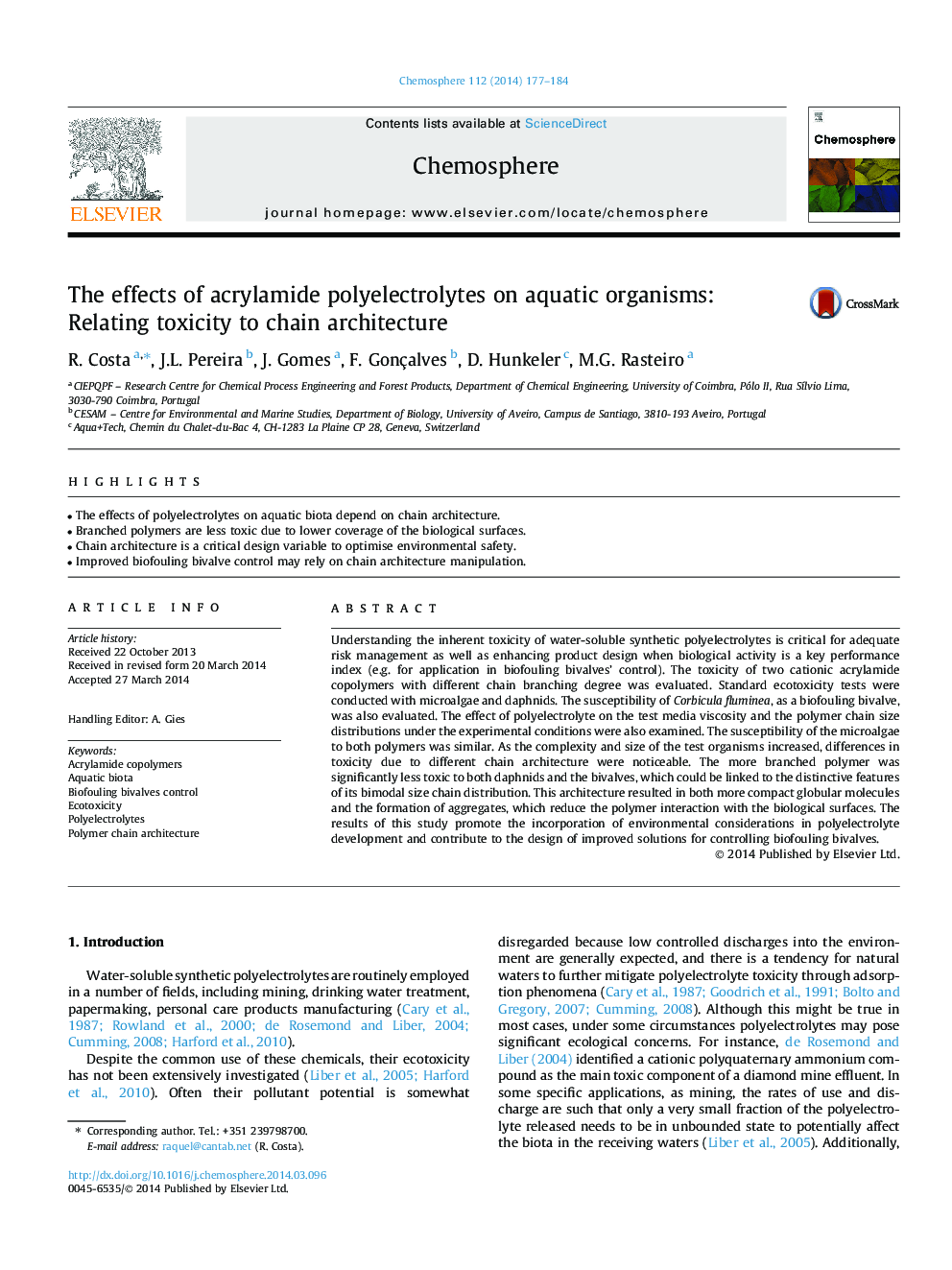| Article ID | Journal | Published Year | Pages | File Type |
|---|---|---|---|---|
| 6308789 | Chemosphere | 2014 | 8 Pages |
Abstract
Understanding the inherent toxicity of water-soluble synthetic polyelectrolytes is critical for adequate risk management as well as enhancing product design when biological activity is a key performance index (e.g. for application in biofouling bivalves' control). The toxicity of two cationic acrylamide copolymers with different chain branching degree was evaluated. Standard ecotoxicity tests were conducted with microalgae and daphnids. The susceptibility of Corbicula fluminea, as a biofouling bivalve, was also evaluated. The effect of polyelectrolyte on the test media viscosity and the polymer chain size distributions under the experimental conditions were also examined. The susceptibility of the microalgae to both polymers was similar. As the complexity and size of the test organisms increased, differences in toxicity due to different chain architecture were noticeable. The more branched polymer was significantly less toxic to both daphnids and the bivalves, which could be linked to the distinctive features of its bimodal size chain distribution. This architecture resulted in both more compact globular molecules and the formation of aggregates, which reduce the polymer interaction with the biological surfaces. The results of this study promote the incorporation of environmental considerations in polyelectrolyte development and contribute to the design of improved solutions for controlling biofouling bivalves.
Related Topics
Life Sciences
Environmental Science
Environmental Chemistry
Authors
R. Costa, J.L. Pereira, J. Gomes, F. Gonçalves, D. Hunkeler, M.G. Rasteiro,
